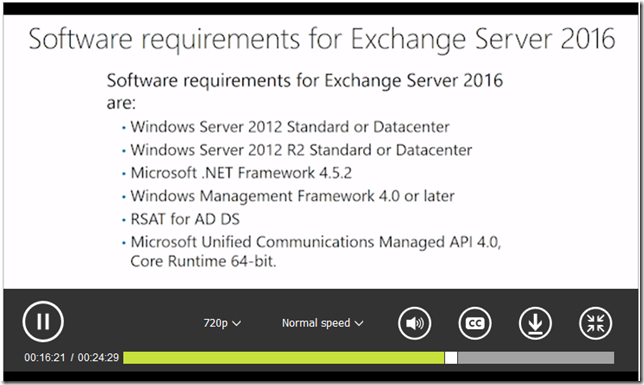Today I ran into an issue while creating a new VM on a Windows Server 2016 Hyper-V host. The VM will run Server 2016 as well but throws an error message when Windows Setup loads:
Windows installation encountered an unexpected error. Verify that the installation sources are accessible, and restart the installation.
Error code: 0xE0000100"
I downloaded a fresh copy of the ISO, deleted and recreated the VM, rebooted but was not able to get rid of this error message. While researching I stumbled on this article: Windows Server 2012 R2 setup may fail on a virtual machine that is configured to use the minimum required memory
This article explains that this error message indicates insufficient memory. Although I assigned 1024 MB and not 512 MB I decided to add some more memory to the VM configuration.
To no avail, the same error occurred when I retried. Knowing now that this error indicates a low memory condition I decided to set the amount of RAM back to 1024 and disabled Dynamic Memory. Started the VM and to my surprise, Windows Setup started and allowed me to install Windows Server 2016 on this VM. 
At this moment I’m not sure why this happened. The Hyper-V documentation for Server 2012 R2 states that in this situation, a cold boot without an OS installed, the VM should have the Startup RAM amount available. This was initially 1024 and later 1500 MB, more than the 512 MB that Windows Setup requires.
When installing or upgrading the operating system of a virtual machine, the amount of memory that is available to the virtual machine during the installation and upgrade process is the value specified as Startup RAM. Even if Dynamic Memory has been configured for the virtual machine, the virtual machine only uses the amount of memory as configured in the Startup RAM setting. Ensure the Startup-RAM value meets the minimum memory requirements of the operating system during the install or upgrade procedure.
However, in my Dynamic Memory enabled VM I had little bit less than 512 MB available.
Hint: Pressing shift-F10 during Windows Setup opens a command prompt, allowing you access to tools such as diskpart, chkdsk and copy. Or in this case, allowed me to query WMI.
Now in this specific situation all memory of the VM host was assigned to running VMs. Because a restarting VM requires more than the minimum configured amount of memory during boot the Hyper-V hosts uses a disk-based paging feature called Smart Paging. However, Smart Paging does not work in a cold boot situation where the VM was powered off before booting the VM.
So when these requirements are met:
- VM with Dynamic Memory enabled
- All host memory assigned to running VMs
- Cold VM boot to install an operating system
The Hyper-V host is not able to make the Startup RAM amount of memory available and the VM sees the Minimum RAM amount. In this case this was 512 MB which triggered the low memory condition described in the KB article I mentioned earlier.
After freeing up some resources from this host the VM was booted again, now it showed the expected 1024 MB of memory available.
Server 2012 R2 or 2016?
Note that the KB article applies to Server 2012 R2 and I used the Server 2012 R2 Hyper-V documentation to learn more about memory management. From my reading there is no difference in behavior between Server 2012 R2 and Server 2016.
For reference, read:














































